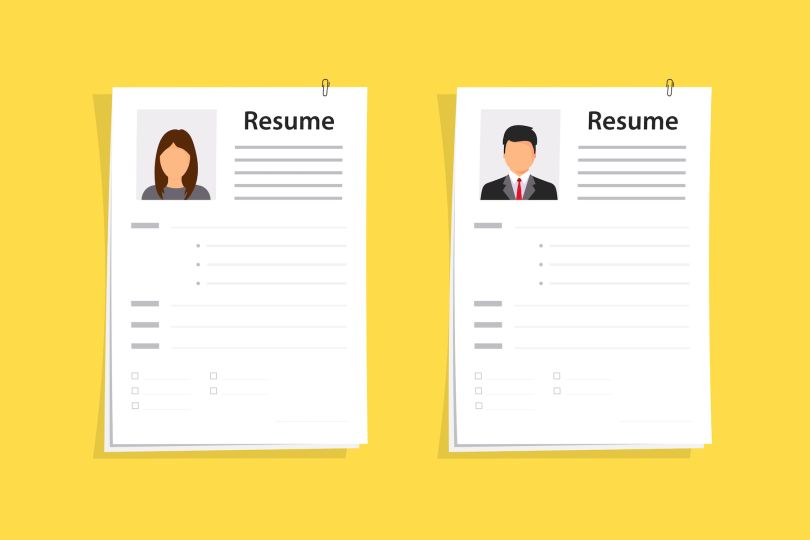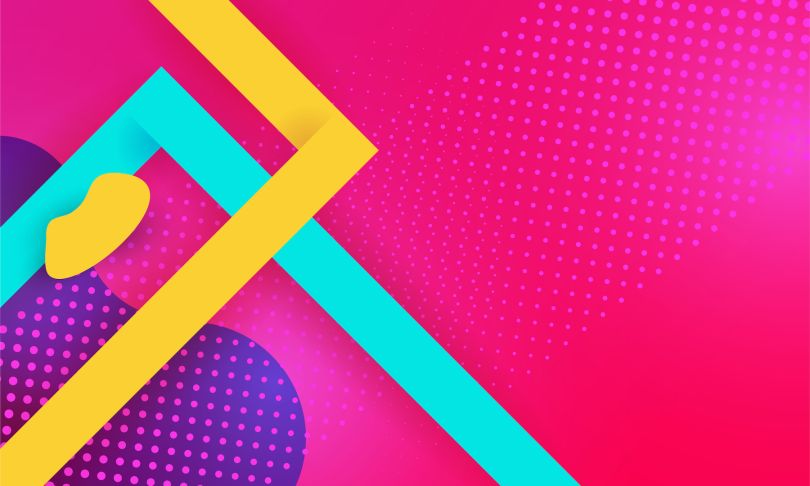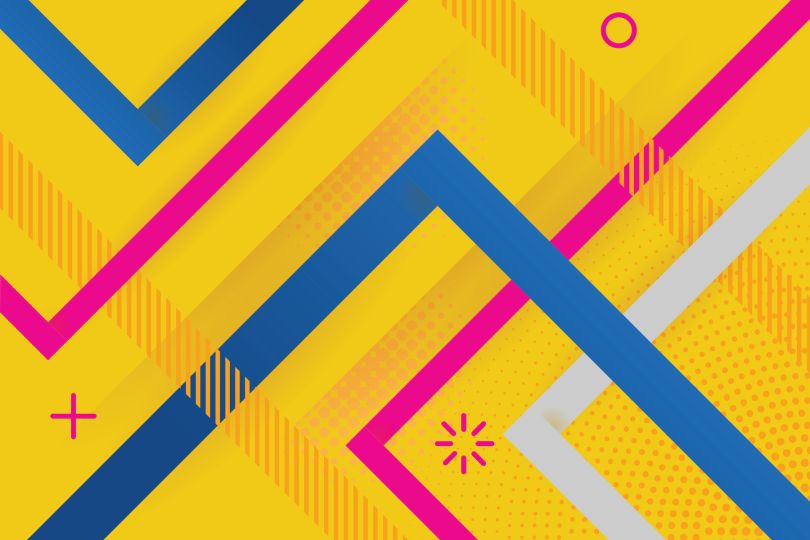It’s that time again: You’re about to refresh your UX designer resume. You’re understandably nervous, because isn’t a resume, after all, the essence of a UX design problem to solve?
Hiring managers are going to have their eyes on your skill set. You want to emphasize your software chops and convince reviewers you have relevant user testing and prototyping experience — without overplaying your hand. You also want to stress your job experience and hit all the keywords on the job posting to pass through HR screeners. And after all that, you want to create an eye-catching design that doesn’t get buried in an inbox.
Still there?
You want to emphasize your software chops and convince reviewers you have relevant user testing and prototyping experience — without overplaying your hand.
Don’t worry so much. Recruiters spend, on average, six seconds looking at a resume, and many hiring partners will tell you obsessing over a resume is a waste of time. A referral is more likely to land you an interview than a word-perfect, exquisitely formatted resume, and the real tests are the strength of your portfolio and how well you present in interviews.
Still, you want to make sure your resume doesn’t get you passed over. Here are a few tips from tech industry hiring managers and a career advisor to ensure your resume will be read and considered.
Customize your resume to the position description
Crafting your section headings and bulleted text to the job description is crucial to drawing the right kind of attention, said Brian Barclay, who is director of product design at the Chicago-based online apparel company Trunk Club and has hired more than 30 employees across his decades-long career.
“First and foremost, I need to understand whether or not the experience matches the requirements of the role. If it’s mid- to senior-level, we’re really going to be looking at what types of companies [you’ve] worked for in the past,” Barclay said.
He points out that applying for a position at a studio agency requires a different approach than, say, a legacy automotive company or established tech brand, where problem-solving skills may be more valued than imaginative, conceptual work.
“At Trunk Club, your real job as a designer isn’t to make things pretty. It’s to solve problems in the right way,” Barclay said. “If you’re really looking to get into digital and product, then your focus should be on solutioning.”
“First and foremost, I need to understand whether or not the experience matches the requirements of the role.”
Emphasizing your specialization is also key, said Joy Reed, a senior experience designer at the digital consultancy Nerdery who has reviewed resumes for the company for the past four years: “If you’re going for a mobile design position, craft your resume for a mobile design position. If you’re going for a web design position, craft it for that. While there are similarities and crossover, tailoring your resume to the specific type of job that you’re going for shows that you understand the nuances.”

Don’t just reference software you know. Explain how you used it.
Many companies bill themselves as software-agnostic, but showing a working familiarity with current website builders, web design frameworks and graphics software can be a differentiator. Reed said the vector graphics editor Sketch, available for $99 per year, and the prototyping tool InVision are office standards at Nerdery. At Trunk Club, Figma and GitHub are platforms of choice.
But it’s not so much the technical aspects of software applications that should come through on the resume, Reed said. Instead, it’s candidates’ understanding of best practice interface guidelines and their ability to convey how they’ve applied these principles in practice.
“You should understand a basic level of accessibility,” Reed said. “You don’t need to know specific languages, but, for example, if you’re designing for the web, you should understand responsive websites and what that means.”
Call attention to your soft skills and business acumen
Being a UX designer requires close coordination with auxiliary teams and beta testers, which is why strong communication skills and humility tend to play well.
“I mean, you’re going to be communicating with product managers and engineers. You have to be able to listen, find compromise and collaborate. And if you don’t have those soft skills, that makes it very difficult to do,” Barclay said.
If you’ve worked on fun, customer-centric platforms, you should include them, Barclay said — especially if they can be more fully elaborated in a portfolio. (Amazon, apparently, isn’t the only software company that’s customer-obsessed.) But leaning too heavily on your design brilliance without alluding to the larger story of how user research and validation methods informed business goals can be a misstep.
“You have to be able to listen, find compromise and collaborate.”
“Designers, in this day and age, if they want to have a seat at the table, they have some amount of business acumen. We want to see how they impacted both the customer and the business,” Barclay said.
So how do you illuminate that in, like, a bullet point or two?
“Say you were on the onboarding team at your company,” Barclay said. “We want to see the metric you started out with, whether that was conversion and funnel, or whatever, and what happened. Did you take risks? Did you see it rise? Did you see it not rise? And it’s OK if it didn’t. It’s OK to acknowledge failure.”
If you’re passionate about technology, don’t be afraid to say so. One way to do that is by calling out professional development experiences — bootcamps, internships, freelance and nonprofit projects, professional affiliations, or even influential books — that have shaped your career trajectory.
“I think that really helps say to the person looking to fill the position that you’re constantly learning and evolving and keeping up with things, and also it builds out a wider breadth of knowledge for you,” Reed said.

Don’t underestimate the importance of page design
For Jo-Nell Sieren, an internship and career advisor who helps students in Columbia College Chicago’s Interactive Arts and Media Department groom their resumes for entry-level UX design positions, well-considered page design is fundamental to making a strong impression.
“For somebody who’s doing user experience, they have to think about the person who’s reading the resume as the persona of their audience, right? It demonstrates their ability to simplify and organize information, which is key for a user experience designer,” Sieren said.
The use of hierarchy, she adds, should direct readers to the most important information first, typically within the top third of the page. Section headings should be set in a bold font, preferably a modern one, so reviewers scanning the document can spot company affiliations, titles, and keywords. Infographics, charts, and icons are considered bad form, as are showy color banners (though a tastefully applied pop of color can add personality to the document).
Above all, the format should match the requirements of the job posting — typically a pdf of one to two pages.
Don’t get thrown out of contention by applicant tracking systems
Even before deciding whether to go with Helvetica or Times New Roman, you need to beat the bots. Nick Keppler, writing for Vice, reports that “maneuvering around algorithmic gatekeepers to reach an actual person with a say in hiring has become a crucial skill, even if the tasks involved feel duplicitous and absurd.”
Since many ATS software platforms allow employers to comb a resume for keywords and use this data to develop a score for a candidate’s job fitness, Sieren advises her students to copy words, quite literally, from the job description. There are even paid services, like the website Jobscan, which will insert words from a job post into a customer’s resume for $50 a month.
Resorting to that kind of counterintelligence strategy is imprudent when applying to Trunk Club, Barclay said, where “there’s a human being behind [resume review], and we think that’s important.” But earlier in his career, as a senior manager of product design at United Airlines, applications were reviewed by third-party recruiters, which he said likely relied on applicant tracking systems as screening tools.
The lesson, it seems, is to stick to the playbook. And don’t get too clever with your synonyms.

Be honest
Reed warns that, while tempting, sugarcoating your professional experience and software knowledge is a strategy likely to backfire. “Because, unfortunately, I do see examples of people padding what they did. And I think that shines through automatically when you start talking to them, in depth, during the interview,” Reed said.
A better route, she says, is to contextualize your knowledge within the scope and responsibilities of a particular role and project.
“If you are going to mention that you did user testing, explain exactly what you did,” Reed said. “Are you speaking only to a few people you pulled into a room? Are you recruiting people who have no experience with the product and are actually end users? Did you interview them before the product was built to get their feedback or was it just to get a good understanding of their interests and pain points? [These explanations] create a very different understanding right away.”
“I do see examples of people padding what they did. And I think that shines through automatically when you start talking to them”
Proofreading, independently and by trusted colleagues, is a must. Typos, misspellings, and grammatical errors are an almost sure way to get a resume removed from consideration.
“When you’re just sort of throwing something together, you can kind of see the desperation in it,” Barclay said. “We want to look for things that are thoughtful because that is your first introduction, right? That’s your handshake.”
In the end, you’re selling your story, and even if it’s the ruthlessly abridged version, you need to believe in it.
“I like when people give me a little bit of background as to why they’re doing what they’re doing: who they are, why they like design,” Barclay said. “I don’t stray away from the more traditional format, ‘this is the job I worked, here’s some bullet points.’ That’s great, and I appreciate that. But I like to hear a little more of a narrative of what you did.”




